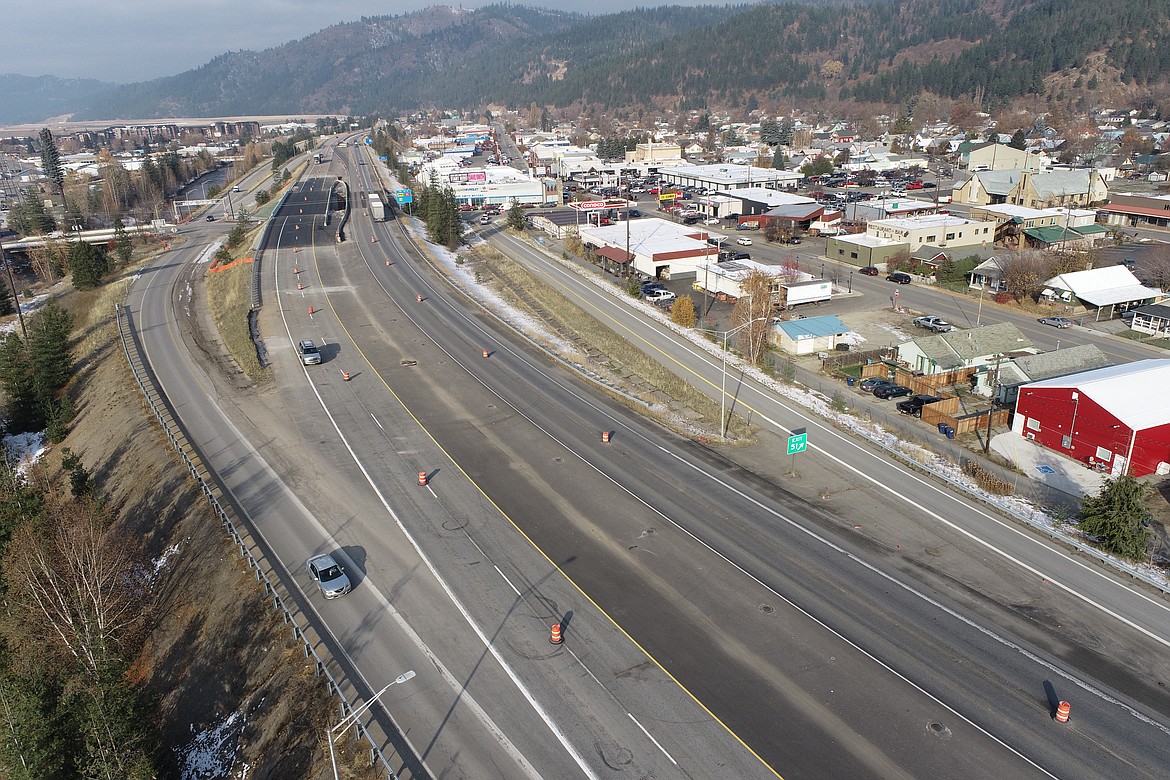ITD rejects request to lower reduce speeds in Shoshone work zones
From the bottom of Fourth of July Pass to the Idaho/Montana border there are four different construction zones along Interstate 90 where traffic is reduced to single lanes in each direction.
The speed limits through these zones have become a topic of much debate as many feel that 65 miles per hour is simply too fast.
Despite efforts by Shoshone County leaders, those speed limits will not be changing.
If a person was headed from Coeur d’Alene traveling east, the first two zones they would come through, the bottom of Fourth of July Pass and Pinehurst, have speed limits reduced to 55 mph. While this may be an inconvenience for anyone in a hurry, these reduced speed zones have had very limited accidents according to various law enforcement agencies.
Once you get to Kellogg and the stretch of work headed into Wallace, that all changes.
The normal speed limit increases from 65 to 75 mph near Cataldo and continues at that rate until just before Silverton.
The Kellogg construction zone has been reduced to 65 mph, while the stretch from Osburn to Wallace hasn’t been reduced at all, just the lanes of traffic being consolidated to single lanes in either direction.
These two construction zones have resulted in numerous people calling 9-1-1 to complain about near-miss situations that they’ve encountered as they attempt to navigate the safety cone landscape.
The Shoshone Board of County Commissioners was approached last month by resident Jon Cantamessa, who has previously spoken to Shoshone County Sheriff Holly Lindsay as well as Public Works Director Jessica Stutzke, with concerns over the safety of the speeds as it is posted through Kellogg and the newest stretch, from Osburn to Wallace.
Sheriff Lindsay also included some comments from her own department, which noted multiple calls daily with concerns over the speeds, as well as more than documented cases of drivers driving in the wrong lane – due largely to missing signage and cones.
The BOCC was also given personal testimony from Sheriff Lindsay concerning the area.
“While driving in my personal vehicle, I too was involved in two very close calls near the Kellogg exit on separate occasions,” Lindsay said. “The speed limit in the Kellogg construction zone is 65 mph. During one incident, a vehicle almost hit me head-on just outside of Kellogg. They were driving westbound in the eastbound lane. Another time, a vehicle was entering the freeway at the Kellogg exit and failed to yield for me. I had to slam on my brakes to prevent a collision, which in turn, almost caused me to get rear-ended at 65 mph.”
Commissioner Tracy Casady, who understands all too well just how dangerous these stretches of road can be when they’re traversed too fast during construction, reached out to the Idaho Transportation Department (ITD) to see if there was anything that could be done to lower the speeds to 55 mph – like they are in the other two construction zones.
“I am reaching out to you over concerns regarding the speed limits posted in the construction zones through the Kellogg area and east on I-90,” Casady wrote in her email. “The public has expressed deep concern about the limits being posted at a speed that is very high for the (single)-lane areas.”
Joey Sprague, an engineer with ITD, responded to Casady’s email where he addressed some of the concerns but also cited the ITD policy that essentially shut down Casady’s request to lower the speed limits.
ITD sets the speed limits in construction zones based on guidance from their Manual on Uniform Traffic Devices which comes from the Federal Highway Administration, specifically part 6C.01, which states: “Reduced speed limits should be used only in the specific portion of the TTC (Temporary Traffic Control) zone where conditions or restrictive features are present. However, frequent changes in the speed limit should be avoided. A TTC plan should be designed so that vehicles can travel through the TTC zone with a speed limit reduction of no more than 10 mph. A reduction of more than 10 mph in the speed limit should be used only when required by restrictive features in the TTC zone… Reduced speed zoning (lowering the regulatory speed limit) should be avoided as much as practical because drivers will reduce their speeds only if they clearly perceive a need to do so.”
After defending ITD’s position, Sprague declined Casady’s request.
“I can certainly understand the sensitive nature of this subject and how a higher speed limit than some are used to can be perceived as more dangerous,” Sprague wrote. “We will make any necessary changes to avoid the wrong-way drivers for these next few weeks. But the speed limit is set in accordance with MUTCD guidelines and engineering judgment. Thank you for bringing these concerns to our attention. If you have any other questions or concerns in the future, please feel free to reach out to me.”
Casady hopes that residents feel better knowing that their local officials heard their pleas and attempted to rectify the situation. However, she is disappointed with the response from ITD.
“It is discerning that areas open in the Cataldo-Rose Lake construction area are 55 mph whereas the confined areas in Kellogg and Wallace are posted at 65 mph,” Casady told the News-Press. “The statement of keeping the speed at a higher rate to prevent drivers from getting impatient and trying to pass in a no-passing zone is absurd. I realize they are trying to keep a uniform speed for the majority of the drivers, but I feel 55 mph is quite adequate.”
Fortunately, construction season is nearing its end – Casady hopes that these next few weeks can be navigated safely and this decision doesn’t come back to haunt anyone.

